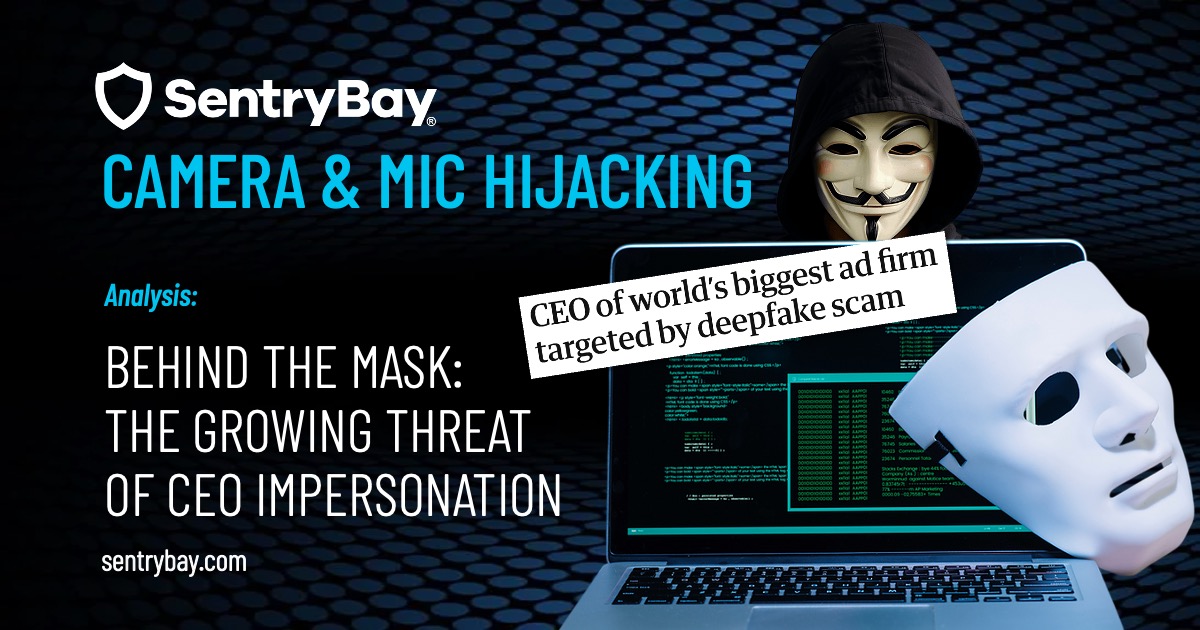
A new wave of cyber deception is targeting the people at the top. Using artificial intelligence and deepfake technology, attackers are now launching sophisticated CEO impersonation scams that mimic voices, faces, and behaviors with unnerving accuracy.
This is not a futuristic concern – it is already here. Recent studies show that more than half of cybersecurity professionals have seen at least one CEO impersonation or deepfake attempt within their organization. The increase over the last year alone is alarming.
The targets are clear: senior executives with the authority to approve payments, transfer funds, or share strategic data. Cybercriminals use generative AI to recreate their voices and likenesses, issuing fraudulent instructions that appear entirely legitimate.
How CEO Impersonation Works
Unlike conventional phishing emails, these scams arrive through channels that employees inherently trust. Attackers may initiate a live video call, send an audio message, or circulate a fabricated video clip that looks and sounds real.
Recent cases have included:
- Audio recordings of a ‘CEO’ demanding immediate wire transfers
- Deepfake video messages requesting urgent password resets
- Synthetic voice calls bypassing multi-factor authentication
The deception works because it feels personal. Employees hear what sounds like their boss, see what looks like their leader, and act before they have time to question. In distributed work environments where digital interaction is routine, that familiarity becomes a powerful weapon.
The Strategic Risk to Business
CEO impersonation is more than a clever social engineering trick – it is a strategic threat that exploits the trust built into corporate culture. Financial loss is only one dimension of the risk. The real damage lies in eroding confidence within teams and undermining communication integrity.
For managed service providers and enterprise IT teams, this threat represents a new frontier. Traditional security layers such as anti-malware software and email filters are blind to synthetic video or audio. These tools were designed for code-based attacks, not AI-driven mimicry of human voices.
The challenge now extends to the human layer. If an attacker can impersonate authority convincingly enough, they can manipulate systems and people simultaneously.
Why Traditional Defenses Fall Short
Fragmented security tools struggle to recognize CEO impersonation because it does not rely on malicious code. It relies on context and psychology. A convincing voice or video can slip past every technical safeguard if no one questions its authenticity.
Even insider threat detection tools may miss it. The request comes from what appears to be a trusted internal source. By the time inconsistencies are noticed, the damage is done.
Securing the Human Perimeter
Recently, at IGEL’s Now and Next event in Frankfurt, SentryBay introduced new protection specifically designed to combat this emerging threat. The Armored Client platform now provides device-level isolation that prevents video and audio hijacking – the raw materials for deepfake creation.
Even if an attacker gains access to a system, the Armored Client blocks all unauthorized recording. No voice samples, camera footage, or meeting content can be exfiltrated or cloned. The solution extends SentryBay’s well-established anti screen capture and anti keylogging protections to cameras and microphones.
Authorized collaboration tools such as Zoom, Teams, and Meet can be safely whitelisted, maintaining productivity without exposing the endpoint to risk.
“Deepfake-based CEO impersonation is an attack on trust itself,” comments Tim Royston-Webb, CEO, SentryBay. “Our goal is to protect the point of origin – your voice, your image, and your presence – so attackers have nothing to copy.”
A New Era of Digital Trust
As CEO impersonation and AI-generated deception continue to rise, organizations must rethink their security posture. Protecting files and networks is no longer enough. You must secure identity itself – the audio, visual, and behavioral signatures that define human communication.
In a world where what you see and hear can be fabricated, trust must be engineered as carefully as technology itself.


